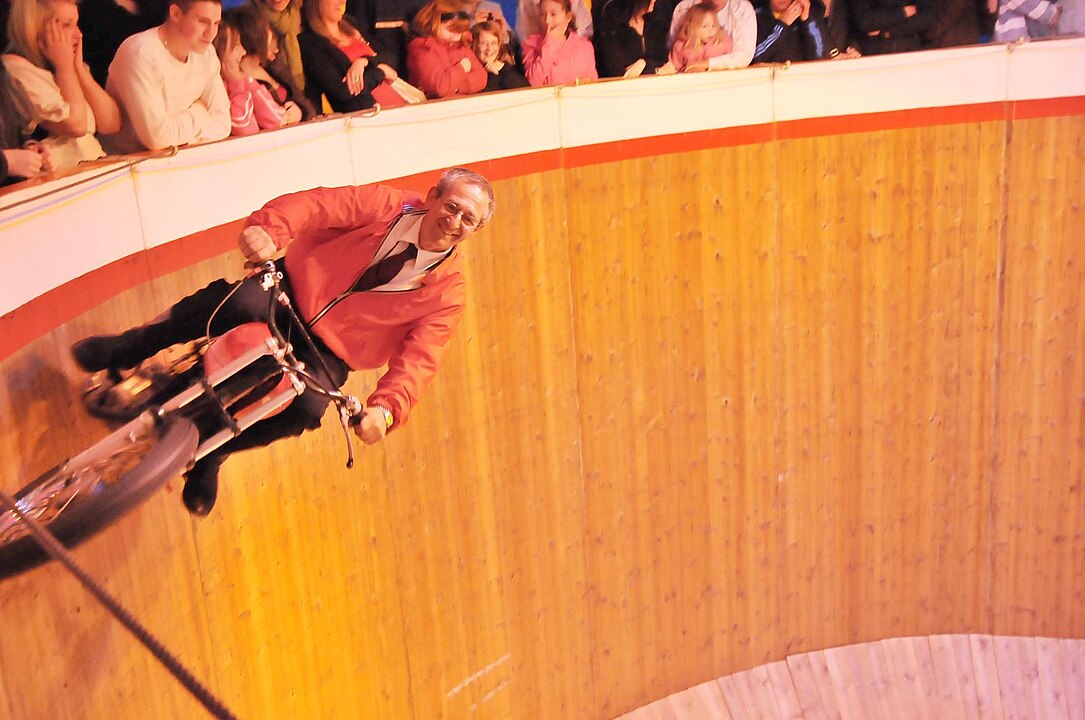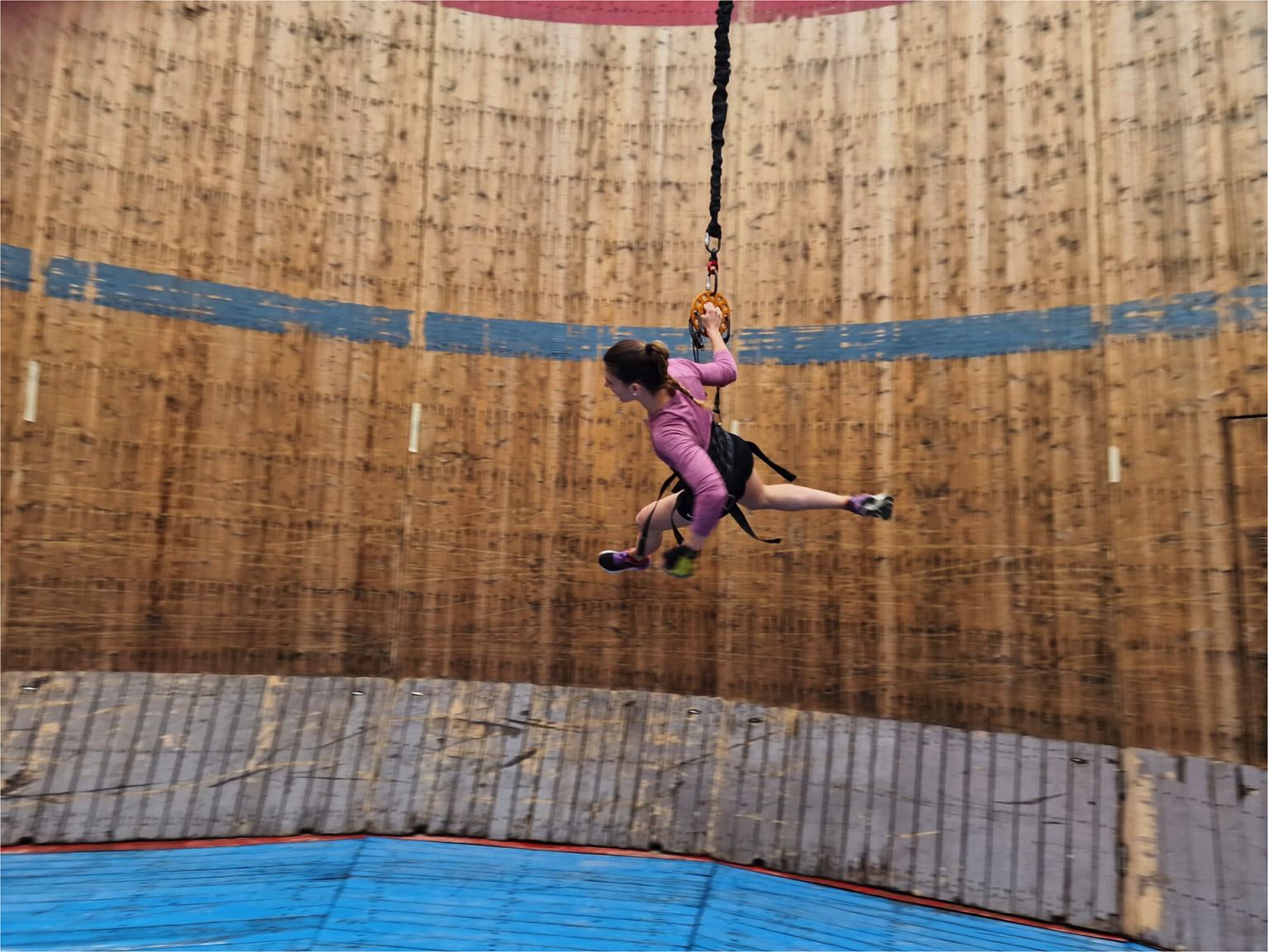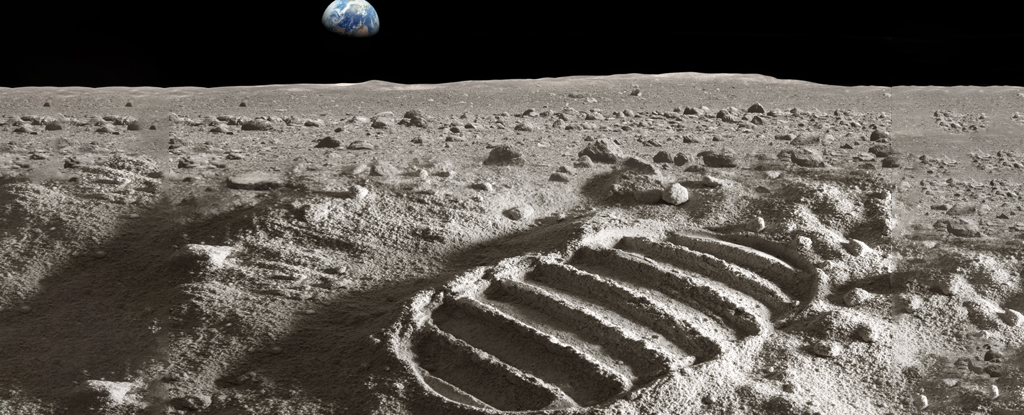Products You May Like
Few things in life are certain. But it seems highly probable that people will explore the lunar surface over the next decade or so, staying there for weeks, perhaps months, at a time. That fact bumps up against something we are certain about. When human beings spend time in low-gravity environments, it takes a toll on their bodies.
What can be done?
Scientists have studied the effects of microgravity and low gravity on the human body. Several problems crop up, like muscle atrophy and bone demineralization. Cardiovascular conditioning suffers, as does neural control of body posture and movement. But while researchers are learning more and more about the effects, solutions are lagging behind.
A new paper published in Royal Society Open Science suggests a novel, low-tech solution for these problems. Its title is “Horizontal running inside circular walls of Moon settlements: a comprehensive countermeasure for low-gravity deconditioning?” The lead author is Alberto Minetti, a Physiology Professor at the University of Milan.
Minetti and his co-authors point out that specific exercises for specific problems may not be the best approach. Instead, whole-body exercise could be a powerful tool for supporting astronaut health.
“Rather than training selected muscle groups only, ‘whole-body’ activities such as locomotion seem better candidates,” they explain. However, there’s a problem with that. “But at Moon gravity, both ‘pendular’ walking and bouncing gaits like running exhibit abnormal dynamics at faster speeds,” they write.
The abnormal dynamics mean that astronauts don’t benefit much from that type of exercise. It’s hindered by an ” … imbalance between the kinetic and potential energy of the body center of mass,” the authors write.
That means it can’t be used to get the same kind of exercise it would provide on the Earth.
“Additionally, the metabolic demands of bouncing gaits are reduced at Moon gravity, limiting their potential stimulus for cardiorespiratory fitness,” the authors explain.
There are some potential solutions out there to help lunar astronauts maintain their health in low gravity. One is a centrifuge, where the rotating motion simulates gravity, encouraging the body to maintain muscle and bone mass. But they’re energy-intensive and impractical.
The authors are proposing a novel solution. Have you ever seen a Wall of Death?

“Here, we propose a novel solution: lunar inhabitants could engage in running on the inside of vertical circular walls, hence running parallel to the Moon‘s surface,” the authors write.
Exercising in a Wall of Death (WoD) would help maintain muscle mass, bone density, cardiovascular fitness, and neural control.
On Earth, the gravity is too strong for humans to run around the sides of a WoD. Only motorized vehicles and bicycles can do it. But on the Moon, the weaker gravity makes them practical.
The researchers simulated a lunar WoD and tested the performance of subjects running in it. They hired a WoD for one day and used a harness of bungee cords to reduce participants’ body weight, simulating the Moon’s lower gravity.
Two participants took part in the tests: a 36-year-old man and a 33-year-old woman. The bungees were tuned so each participant weighed one-sixth of their body weight. The harness unloaded one side of the subjects’ bodies to further mimic lunar conditions. Each participant’s data from the WoD was combined with treadmill data to give robust results.
Once inside the WoD and connected to the harness, this is what the experiment looked like.

The participants quickly got the hang of the unusual motion required to run horizontally inside the WoD.
“This process required only 5–8 attempts and allowed them to start running with no assistance,” the authors write. The participants “… ended their performance by safely slowing down their pace and descending from the horizontal posture on the wall down to the upright one on the WoD floor, with no injuries,” they explained.
The authors say they’ve successfully demonstrated the basics of using a WoD to support lunar astronaut health.
“We have demonstrated for the first time that humans can safely run horizontally in low gravity conditions inside a cylinder, sized as a terrestrial ‘WoD’, through a speed-driven, self-generated higher artificial gravity,” they explain.
The researchers are confident that the Wall of Death idea can help lunar astronauts deal with the chronic effects of lunar gravity. At the same time, they’re cognizant of their small sample size and the study’s other limitations.
“In conclusion, while being aware of the small sample size, of the crudeness of kinematics acquisition in such a peculiar field experiment, and that dedicated bed rest studies will be needed to refine this topic, we are confident in our findings,” they write in their conclusion.
Though normal running on the Moon is impossible, the WoD provides a way to gain the benefits of running in short WoD exercise sessions daily.
Participants using the WoD created “… a sufficiently high (lateral) self-generated artificial gravity likely capable of maintaining, through a few short, almost ‘terrestrial’ running laps a day, an acceptable cardio-motor fitness and bone mineral status, useful to locally move and work around, to prepare the long trip to Mars, and to return home in good condition.”
There’s an elegance around low-tech solutions to confounding problems. A simple WoD could be the solution to the Moon’s low gravity instead of a complicated, energy-hungry device like a centrifuge.
“All of this, by using an inexpensive and passive facility already built in their circular inhabited units,” the authors conclude.
This article was originally published by Universe Today. Read the original article.
